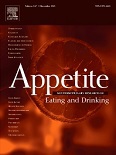Age, time orientation and risk perception are major determinants of discretionary salt usage
Dublin Core
Título
Tema
Abstract
The present work explored the relationship between discretionary salt usage and personal characteristics, using
boosted regression trees (BRT). Specifically, the focus was on how socio-demographic characteristics and personality traits linked to risk perception and time orientation impact on discretionary salt consumption patterns. For this purpose, an online cross-sectional survey with a convenience sample of 498 Uruguayan participants was carried out. Participants completed the consideration of future consequences (CFC) scale adapted for eating behaviour, a short survey about discretionary salt consumption patterns and indicated their degree of agreement
with statements measuring perceived risk of sodium consumption. Finally, socio-demographic data were
collected. BRT were applied to build predictive models that related discretionary salt usage to socio-demographic
characteristics, the two factors of the CFC-Food scale (consideration of the future and consideration of the immediate
consequences of eating behaviour), and the two factors of the perceived risk of sodium consumption scale (severity of perceived risks and risk compensation). Age, time orientation and perceived risk were the most relevant explanatory variables for discretionary salt usage. Older people had a lower likelihood of adding salt to food, either at home or when eating out. In addition, individuals who tend to be present rather than future
oriented, as well as those with low perception of risk severity and susceptibility were more likely to add salt to foods. Results from the present work suggest that communication campaigns to reduce discretionary salt intake should mainly focus on stressing the short-term health benefits of reducing sodium intake and raising perceived susceptibility.
Fuente
Editor
Fecha
Derechos
Información sobre Derechos de Autor
(Por favor lea este aviso antes de abrir los documentos u objetos)
La legislación uruguaya protege el derechode autor sobre toda creación literaria, científica o artística, tanto en lo que tiene que ver con sus derechos morales, como en lo referente a los derechos patrimoniales con sujeción a lo establecido por el derecho común y las siguientes leyes (LEY 9.739 DE 17 DE DICIEMBRE DE 1937 SOBRE PROPIEDAD LITERARIA Y ARTISTICA CON LAS MODIFICACIONES INTRODUCIDAS POR LA LEY DE DERECHO DE AUTOR Y DERECHOS CONEXOS No. 17.616 DE 10 DE ENERO DE 2003, LEY 17.805 DE 26 DE AGOSTO DE 2004, LEY 18.046 DE 24 DE OCTUBRE DE 2006 LEY 18.046 DE 24 DE OCTUBRE DE 2006)
ADVERTENCIA: La consulta de este documento queda condicionada a la aceptación de las siguientes condiciones de uso: Este documento es únicamente para usos privados enmarcados en actividades de investigación y docencia. No se autoriza su reproducción con fines de lucro. Esta reserva de derechos afecta tanto los datos del documento como a sus contenidos. En la utilización o cita de partes debe indicarse el nombre de la persona autora.Formato
Idioma
Tipo
Identificador
Cobertura
Document Item Type Metadata
Original Format
- Fecha de agregación
- March 29, 2022
- Colección
- Bibliografía Nacional Química
- Tipo de Elemento
- Document
- Etiquetas
- Alimentación, Árboles de regresión potenciados, Sal, Sodio
- Citación
- Antúnez, Lucía, “Age, time orientation and risk perception are major determinants of discretionary salt usage,” RIQUIM - Repositorio Institucional de la Facultad de Química - UdelaR, accessed July 23, 2024, https://riquim.fq.edu.uy/items/show/6473.
- Archivos

